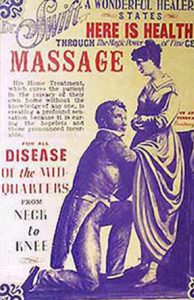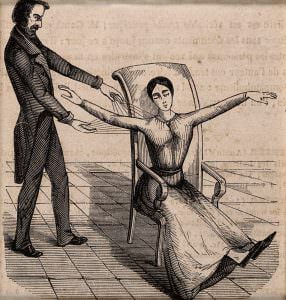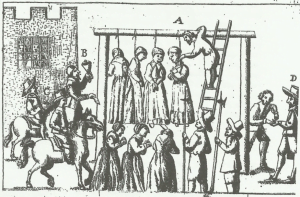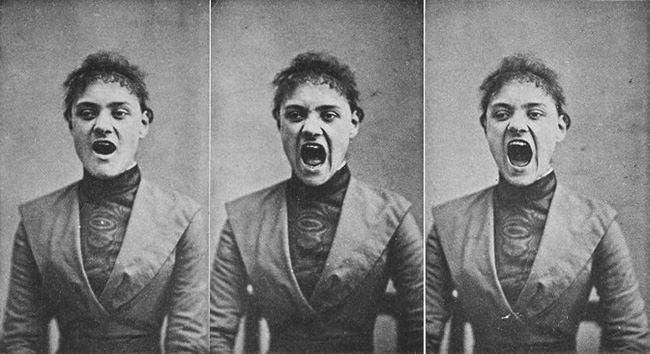Google defines hysteria as “exaggerated or uncontrollable emotion or excitement”. It is a common adjective – and usually used on women that are expressing any form of emotion – anger, sadness or shock. It is one of the many terms used to dismiss women’s emotions. A little insight into the history of the word hysteria leads us down the dark path of the subjugation of women in the Middle Ages, and how the modern-day word still retains connotations of its hyper-sexist past.
Forget religious scripture and moral compasses, supposedly objective fields like science and medicine are not exempt from patriarchy! Since its origin, these fields have been male-dominated due to the myth that men are “more objective” and of a better “scientific temper”. This leads to scientific studies and research containing gender bias, even while being peddled under the myth of objectivity. Objectivity, in this case, becomes an amalgamation of different facets of patriarchy which the mostly male scientists are often blind towards. The case of hysteria is the perfect example to show how even supposedly objective fields like medicine and science are beset by instances of sexism – even if in the Middle Ages.
The term ‘hysteria’ comes from Greek word ‘hystera’ meaning uterus.
Accusing The Womb
The term ‘hysteria’ comes from Greek word ‘hystera’, meaning uterus. Originally it denoted hysterical suffocation – shortness of breath, but by associating it with the uterus, it became a condition exclusively possible in a woman’s body.
Argonauto Melampus is considered the founder of the first approach towards hysteria, who forwarded the explanation by giving the example of the virgins of the Greek city of Argo, who had dishonoured the phallus and fled to the mountains. For refusing to receive sex from men, they were declared insane. The theory was that lack of orgasms had led to ‘mad’ behaviour. We also have to remember that women were expected to be at the disposition of men, and ever-ready to receive sex because it was a favour the man was offering.
Plato described the uterus as a living being. Arateus described it as ‘an animal within an animal’. There was a longing to understand and medicalize the female body, to explain the distinctions between men and women. Science was employed to justify the subjugation of women, as it was an authoritative source for society to find proof of what they wanted to believe.

Jean-Martin Charcot demonstrating hysteria in a patient at the Salpêtrière hospital, 1887. Source: www.victorian-era.org
One of the most bizarre theories was given by Hippocrates in his theory of ‘wandering wombs’. It was followed by Plato’s argument that the uterus, a living being, felt sad and unfortunate when it did not meet its male counterpart. This sadness led it to wander inside the body seeking satisfaction, and caused symptoms of madness by putting pressure on other organs.
Helen King in her essay “Once Upon a Text: Hysteria From Hippocrates,” writes about how the threat of wandering womb was used to assert power over women in regard to reproduction. In order to keep her away from this ‘disease’, always keeping the womb occupied with a foetus was considered an appropriate solution.
the womb was the site of women’s craftiness, weakness, and everything that posed a threat to social structure.
Although these ‘symptoms’ like shortness of breath could be seen in men as well, the womb was the cause of all the menace, according to the Greek philosophers. It was the site of women’s craftiness, weakness, and everything that posed a threat to the social structure of the then civilisation.
Accusing Femininity
Aristotle’s assertion that a “woman is a failed man” passed as a reasonable theory in that period, and was in accordance with Christianity’s ‘original sin’. It soon evolved into seeing women as defective creatures, and led to various perceptions of femininity, like the deficiency of certain traits required to live ‘normally’, and the capacity of possessing evil forces like demons.
Another behaviour associated with hysteria was when a woman expressed sexual forwardness. Physically expressing sexual desires and erotic behaviour was immoral, and women indulging in it were perceived as in need of treatment in order to recover them from this ‘illness’.

Victorian advertisment showing a doctor treating woman’s ‘hysteria’ by ‘pelvic massage’. Source: www.cataloguemagazine.com.au
Since the uterus stood for traditional femininity, hysteria started justifying that women were essentially weaker beings and highly vulnerable to mental diseases and were not capable of healing themselves adequately. When a female was diagnosed with hysteria, she was supposedly guilty of the sin of not procreating.
The remedies that were prescribed for curing hysteria robbed women of their right over the sexual courses of their body. Sexual intercourse was considered the best solution to hysteria, which was also comfortable to accept since anything leading to marriage was always welcome, regardless of the willingness of the parties. Masturbation was not recommended since it was a taboo – women achieving sexual pleasure on their own were blasphemous. This would clearly threaten a man’s position as a dominant partner, hence being self-dependent was forbidden in all ways.
The only accepted way of penetration was the androcentric model. The semen was thought to have healing properties, so physicians regarded all kinds of contraceptives as injurious to the woman’s health. And if a woman was not able to achieve sexual pleasure through it, she was labelled prone to hysteria as men were not ready to own up to their inadequacy.
Another behaviour associated with hysteria was when a woman expressed sexual forwardness.
Accusing Disorderly Women
The concept of linking femininity with evil emerged during The Middle Ages. “Possession” was added to the list of symptoms in hysteria. It was believed that demonic forces were attracted to melancholic and ‘lower’ beings, like women, especially if they were single or elderly, since not being sexually active and not serving your man was against everything. Due to this reason, many documents of that time describe women not as ‘patients’ but the cause of a human disease.
Thinkers of that time traced the perception of ‘demonic women’ to disorderly behaviour, and further validated masculine control. The reason given for this behaviour was ‘corrupted’ sexuality/maternity. Parallels can be drawn to current issues as well, like freedom of sexual choices and orientation, reproductive rights, and not pursuing motherhood. Women advocating these issues are still considered rebellious and antithetical to the established order of society.

Franz Anton Mesmer believed it was a bodily fluid which caused the erratic behavior exclusively in women and would treat his patients with “mesmerism” — essentially hypnotizing them into believing they had been cured. Source: cdn8.littlethings.com
Exorcism was a cure to hysteria for early Christianity, but with the rise of the authoritative clergy in the Dark Ages, it became a punishment for women accused of anti-social behaviour – sorcery. Approximately 90% of the women were accused of witchcraft during the Middle Ages, and vast atrocities occurred against them in the name of ‘witch-hunts’.
When a female was diagnosed with hysteria, she was supposedly guilty of the sin of not procreating.
Modern And Post-Modern Perceptions
Further advancements and assertion of psychology in medical science modified the perception of hysteria. A prominent clarification was made by the father of psychoanalysis, Sigmund Freud, who said that psychological dysfunctioning was entirely related to emotional activities and neurological processes, and not a womb craving orgasm.
Following this, the number of women diagnosed with hysteria declined. However, it became an issue of contention in feminism. Negative connotations started being applied for women’s history regarding hysteria, especially during the suffrage campaign.
“One does not need to be against women’s suffrage,” the London Times editorialised in 1908, “to see that some of the more violent partisans of that cause are suffering from hysteria. We use the word not with any scientific precision, but because it is the name most commonly given to a kind of enthusiasm that has degenerated into habitual nervous excitement.”
However, a number of theories developed which glorified this history as well. Many feminists started associating hysteria and its ‘demonic’ past with empowerment. Their claim was that those women were one of the firsts to oppose the meek behaviour of a traditional female and explore alternatives. Many started reclaiming their stands of ‘witches’ in order to showcase strength, power and fearlessness.

The Newcastle Witch Hunt (1650), from Ralph Gardiner’s account (1655). Image Credit: The Conversation
Today, hysteria is still used to denote a woman’s loud behaviour, followed by the statement, “Stop PMSing”. Next time you ask a woman why she’s being hysterical; remember that the witches are watching you.
Also read: Female Masturbation: Politics and Pleasure
Featured Image: “Hysterical Woman Screaming”, Photo by Albert Londe 1890. Via Pinterest





But it is not science , I mean all of them tried to sound scientific but they weren’t . Just like the bloody theory of how women were ” deformed” men by Arttistole . These people unsuccessfully tried to justify patriarchy through science but they couldn’t . So , don’t blame science for that .